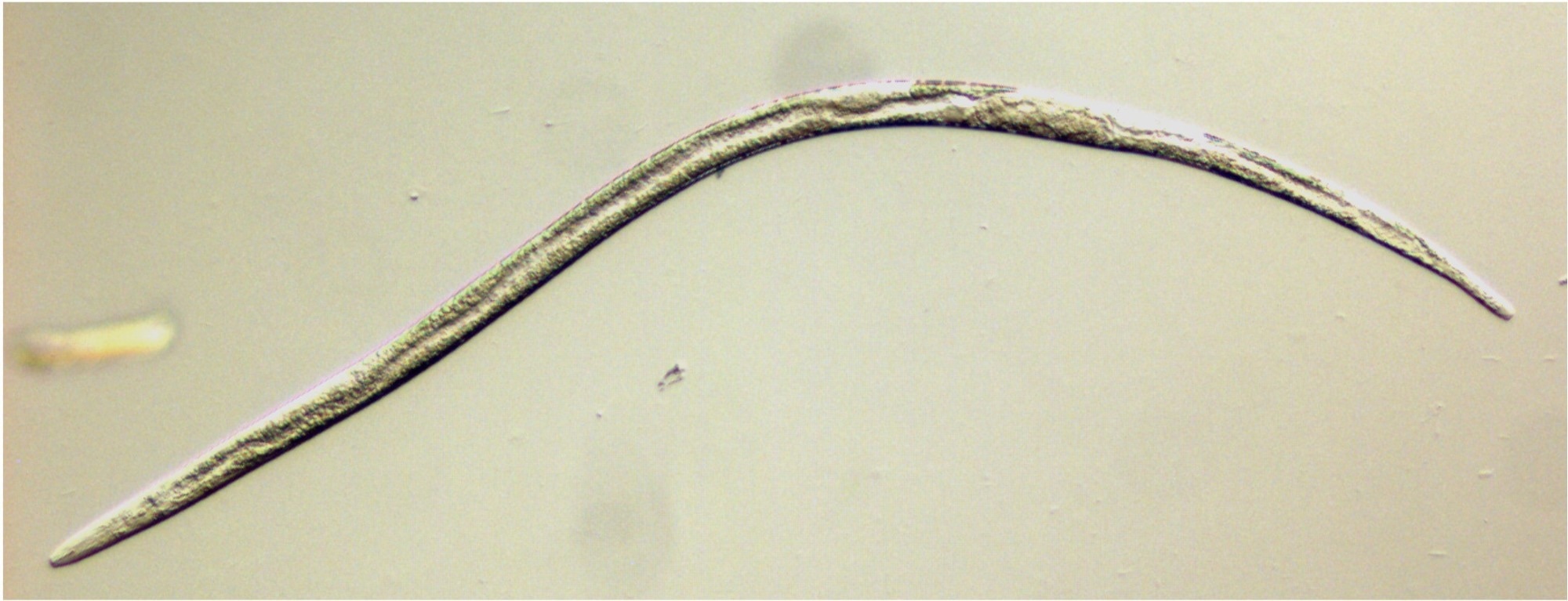Scientists discover that sex differentiation in Bursaphelenchus nematodes is dependent on random events, instead of structured genetic mechanisms.

Scientists discover that sex determination in nematodes of the genus Bursaphelenchus can be attributed to random events rather than well-known mechanisms such as genetic or environmental sex determination. Picture courtesy: Ryoji Shinya
The mechanisms underlying sex determination in nematodes, commonly known as roundworms, have not been fully understood. Now, an international team of researchers has conducted a study to determine the sex determination process in two fungal feeding/plant disease-causing nematode species of the genus Bursaphelenchus. The team found that an unknown stochastic regulation mechanism was responsible for sex determination in these species. Exploring these mechanisms further can help contribute to pest control strategies via nematode population control.
The sex and sexual characteristics constitute key aspects of an organism’s life and are determined by a biological process known as sex determination. These ever-evolving mechanisms are broadly classified based on the type of “switch” that triggers them. Genetic sex determination is dependent on sex chromosomes, such as the X and Y chromosomes in human beings, whereas environmental sex determination depends on factors like temperature and the local ratio between males and females. Although most sex determination mechanisms are genetic or environmental, a third type of sex determination, which depends on completely random factors, also exists. This, however, has not been explored completely.
The sex determination mechanism of Caenorhabditis elegans, a species of nematode, or our common garden-variety roundworm, is one of the best understood aspects of its biology. In its case, embryos with two X chromosomes, or the XX embryos, develop into hermaphrodites, while the XO embryos, which have one sex chromosome—the X chromosome—develop into males. Several species of nematodes have a sex determination mechanism similar to that of C. elegans. Interestingly, however, some nematode species also rely on the XX/XY system for sex determination, with both X and Y types of sex chromosomes, as well on environmental factors. Unfortunately, the mechanisms that cause this variance in sex-determination between nematode species have remained a mystery thus far.
Recently, a group of researchers led by Associate Professor Ryoji Shinya from Meiji University, Japan, Professor Paul Sternberg from the California Institute of Technology, USA, and Associate Professor Taisei Kikuchi from the University of Miyazaki, Japan, conducted a study to understand sex determination in two nematode species—Bursaphelenchus xylophilus and Bursaphelenchus okinawaensis. Dr. Shinya’s team have long been engaged with nematode research. In this new study, they conducted a sex-specific genome-wide comparative analysis to determine the initial trigger of sex determination in the two Bursaphelenchus species, and genetic screening to determine the genetic cascade that followed the trigger.
In their study published in Nature Communications, the researchers report that there is no difference in the number of chromosomes, or the genome, between males and females in B. xylophilus and between males and hermaphrodites in B. okinawaensis. This suggests that these sexes in both nematode species have identical genomes and no sex chromosomes. Thus, sex determination in these species must be through non-genetic mechanisms.
To explore this further, the team conducted an analysis to find out if environmental factors such as temperature, nutrient availability, and population density influenced sex determination in these organisms. They observed that these factors had a minimal effect on sex determination in the larvae of these species, and that none of the larvae turned into males.
Considering that the offspring produced through self-fertilization in B. okinawaensis are essentially isogenic clones, it is clear that genetic differences are not required for sex determination in B. okinawaensis. In addition, even under fixed environmental conditions, genetically identical individuals of B. okinawaensis differentiate into hermaphrodites and males. The team suggests that the sex of B. okinawaensis nematodes is mainly determined by stochastic expression of an unknown trigger gene and/or developmental noise. In other words, sex differentiation occurs as a result of random events during development.
The team also compared the orthologs, i.e., genes related by common descent, of similar sequences in C. elegans, B. xylophilus, and B. okinawaensis. They found that only downstream genes in these three nematodes were conserved, indicating that the Bursaphelenchus genus has a different sex determination trigger than does C. elegans. In addition, they conducted genetic analyses and identified one major sex determining locus in B. okinawaensis, known as Bok-tra-1a. Using bioinformatics and RNA-sequencing, they observed a conservation of putative targets in this regulating gene, further supporting the findings that indicated the conservation of downstream functions. This implies that nematode sex differentiation might have evolved from this downstream regulator.
Our discovery of a striking new mode of sex determination in the nematode phylum might help not only with lab studies of parasitic nematodes, but also contribute to population engineering."
Dr. Ryoji Shinya, Associate Professor, Meiji University, Japan
Indicating the importance of these findings in pest control, Dr. Shinya says, “Damage caused by plant-parasitic nematodes is estimated at 80 billion USD per year. Conventional nematicides are harmful for the environment. Understanding the sex determination mechanisms of plant parasitic nematodes can help in developing sterile strains that are not parasitic but may help reduce nematode populations in a safe and sustainable way. ”
Who knew that exploration of sex determination in parasitic nematodes would direct the way to disease-free crop production and forest protection? We have our fingers crossed!
Unearthing the Hidden Potential of Nematodes -by SHINYA Ryoji
Unearthing the Hidden Potential of Nematodes. Video Credit: Meiji University